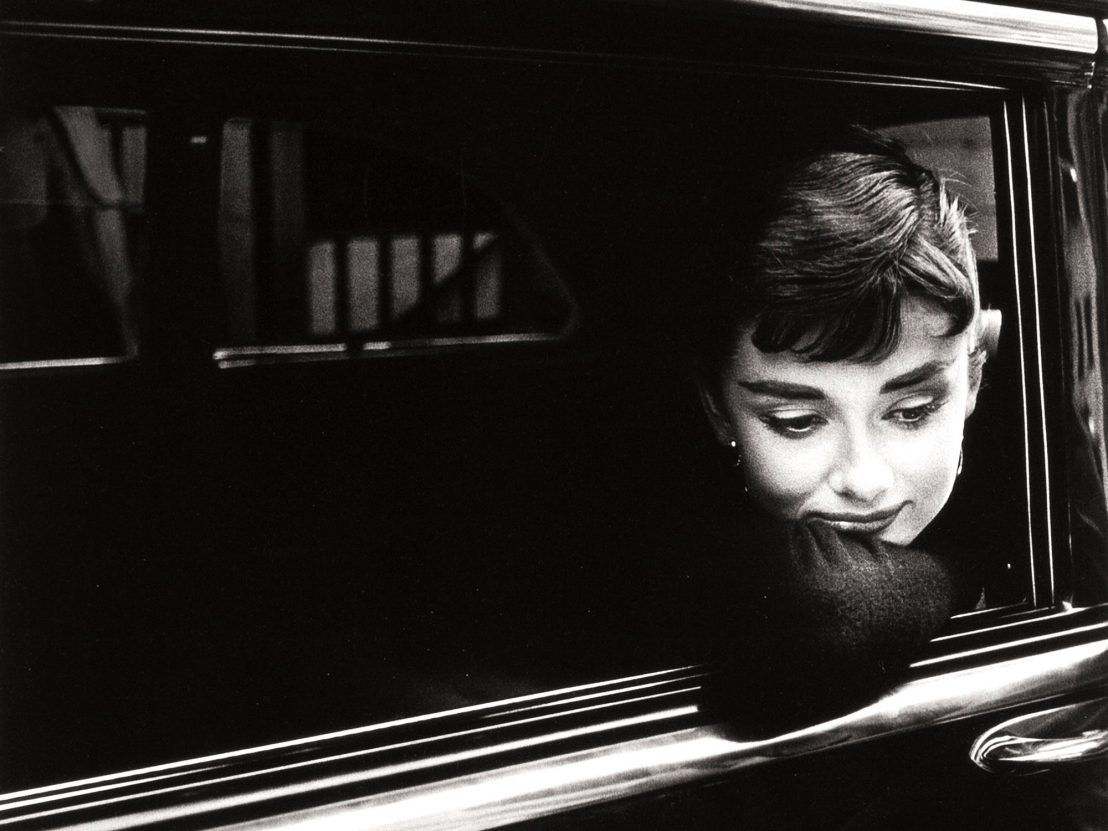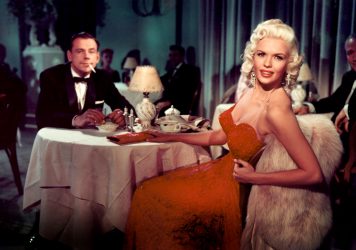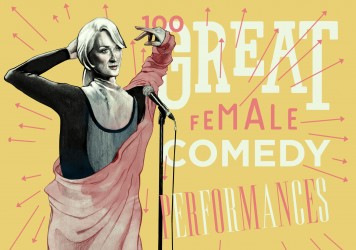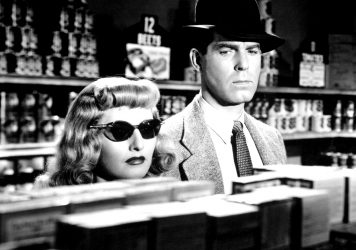
Sabrina, which turns 65 this month, is a Cinderella story. It’s also a time capsule of postwar America that comments on class, gender roles and disparities between the haves and have nots. As viewers, our entry point into this world is through Audrey Hepburn’s narration as she pithily describes the frills of the Larrabee family’s large East Coast estate where the majority of the film is set: “The outdoor tennis court and the indoor tennis court. The outdoor swimming pool and the indoor swimming pool…” Her cadence makes it clear she is poking fun at the grandiosity of the place, and it endears us to her immediately.
When we first see Sabrina, daughter of the Larrabees’ chauffeur, she’s dressed in a pinafore, standing barefoot in water that has pooled on the driveway while she and her father wash a Rolls Royce. Distracted from the task at hand, the camera tracks Hepburn as she moves in a dreamy trance and climbs up into the large tree that separates their living quarters from the main house where a fabulous party is taking place. It is from this vantage point that Sabrina observes the object of her unrequited teenage affection, the Larrabees’ youngest son, David (William Holden). During adolescence every experience can feel emotionally engulfing, and the way Hepburn conveys Sabrina’s longing to be noticed and inducted into that sphere of evening gowns and champagne is infinitely relatable.
Holden and Hepburn fell in love during production on Sabrina. Holden, 11 years Hepburn’s senior, promised to leave his wife but it all fell apart when Hepburn learned he wouldn’t be able to give her the children she desired due to his elective vasectomy years prior. One can only speculate as to how this may have impacted 24-year-old Hepburn’s performance. There is an easy chemistry between Sabrina and David that speaks to an intimacy between actors that would be difficult to fake.
Equally impressive is Hepburn’s nuanced portrayal of Sabrina’s deteriorating mental health following her attempted suicide. Her eyes seem vacant and it’s clear all rational thought has been abandoned. Her body shrinks into itself as Sabrina goes through the motions of writing a parting note then turning on every car engine in the garage she plans to seal herself in. The scene is ultimately played for laughs (undoubtedly to avoid alienation of a mainstream 1950s audience) and written off as nothing but juvenile theatrics, resulting in the silly girl rescued by adult man Linus Larrabee (Humphrey Bogart), but it’s impossible to ignore the emotional honesty Hepburn brings.
Hepburn’s likability always augmented her characters and Sabrina’s glamorous transformation following a stint at a Paris culinary school shows how this functioned within a narrative. Sabrina arrives back in Long Island at the start of the film’s second act and waits at the station for a ride home to the manor. Hepburn’s physicality has changed; her shoulders pulled back and her head lifted, she exudes a confidence that could only be gained from experiencing life beyond the Larrabees. It’s a visual confection – dark suit with a cinched waist, gloves and heels – and a prime example of empowerment through femininity. There’s something delightful about watching dumb playboy David fawn over this newly self-assured Sabrina, but beyond that it’s exciting to recognise a young woman in a classic romantic comedy acquiring self-esteem through means other than a man’s affection.
The love triangle between Sabrina, David and workaholic curmudgeon Linus is the least compelling aspect of the film, yet the way Hepburn commands the screen in only her second leading role, more than holding her own alongside a seasoned pro like Bogart, is a revelation. She is playful with him, softening his gumshoe, scenery-chewing tendencies. Bogart tried to get Lauren Bacall into the role, but relented when director Billy Wilder insisted that Hepburn was perfect for the part. Bogie sulked his way through filming in retaliation.
Hepburn masterfully handles the heavier emotional beats, for instance during the final scene in which a devastated Sabrina discovers Linus’ plan to send her back to Paris alone under the pretence that he will be joining her later as her boyfriend. Cinematographer Charles Lang ensures that our attention is firmly fixed on Hepburn as her baleful eyes search Linus’ face. She plays it with a potent mix of unspoken heartbreak and the kind of quiet resilience indicative of Sabrina’s upbringing and circumstance. It doesn’t matter if the pair ends up together (which they do, of course), our compassion for Sabrina is of greater importance.
At the film’s midway point, Sabrina’s father tells her that she’s reaching for the moon, referring to David and the life she covets – but she refuses to be deterred from all she desires. “No father,” she says, “the moon is reaching for me!”
Published 15 Oct 2019

By Abbey Bender
She exudes sassy femininity in this classic musical comedy.

A tribute to some of the most memorable comic turns from women actors, featuring an immortal Meryl Streep.

By Adam Scovell
The silver screen icon subverted her heroine image to deliver one of Hollywood’s most memorable villains.